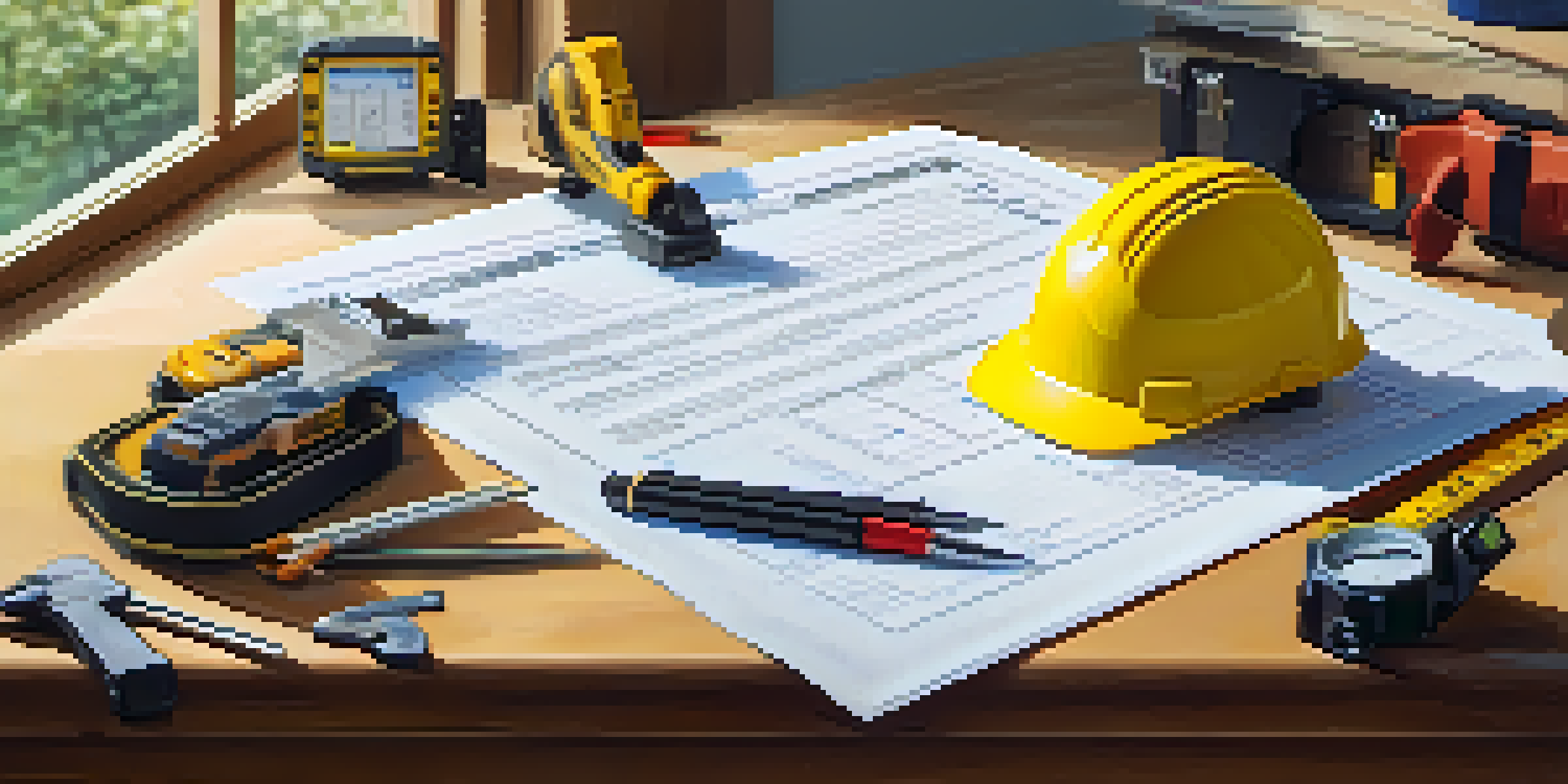Understanding Inspection Checklists: What to Expect

What is an Inspection Checklist and Why is it Important?
An inspection checklist is a tool used to ensure that all necessary steps are followed during an inspection process. It acts like a reliable guide, helping inspectors systematically evaluate every aspect of what they're examining. By using a checklist, you can minimize the chances of overlooking critical elements, which is vital in maintaining safety and compliance.
An ounce of prevention is worth a pound of cure.
The importance of inspection checklists can't be overstated. They not only streamline the inspection process but also enhance accountability and consistency. Imagine trying to bake a cake without a recipe; the chances of missing key ingredients are high, just as an inspector might miss crucial details without a checklist.
In various industries, from construction to healthcare, checklists serve as a universal standard. They ensure that everyone is on the same page and that inspections are thorough and effective. So, whether you’re checking a building’s safety features or evaluating equipment, using a checklist is indispensable.
Types of Inspection Checklists You Might Encounter
Inspection checklists come in various forms, each tailored for specific purposes. For example, you might find a safety inspection checklist for workplaces, while a maintenance checklist could focus on machinery upkeep. This diversity allows different industries to address their unique needs effectively.

A common type is the pre-inspection checklist, which helps inspectors prepare by outlining what they need to review beforehand. Think of it as packing for a trip; without a list, you might forget essential items. Similarly, a pre-inspection checklist ensures nothing is overlooked before diving into the assessment.
Importance of Inspection Checklists
An inspection checklist helps ensure thorough evaluations, enhancing safety and compliance across various industries.
On the other hand, post-inspection checklists are used to summarize findings and recommend actions. These documents can be beneficial for follow-ups, enabling teams to track improvements over time. By understanding the different types, you can choose or create the right checklist for your specific inspection needs.
How to Create an Effective Inspection Checklist
Creating an effective inspection checklist starts with defining your objectives. Ask yourself what you aim to achieve with the inspection. By setting clear goals, you can tailor the checklist to cover all necessary areas, ensuring nothing slips through the cracks.
If you can't measure it, you can't improve it.
Next, ensure that the checklist is organized logically. Group related items together, much like how you would organize your closet by type of clothing. This not only makes it easier to follow but also helps inspectors stay focused and efficient during their evaluation.
Finally, it's essential to review and update the checklist regularly. Just as we adapt to changing weather by updating our wardrobe, your checklist should evolve based on new regulations, technology, or lessons learned from previous inspections. This adaptability will keep your inspections relevant and effective.
Common Mistakes When Using Inspection Checklists
One common mistake is failing to customize checklists for specific inspections. Using a generic checklist can lead to missed details that are crucial to the particular task at hand. Just as a one-size-fits-all approach rarely works in fashion, it doesn't work well in inspections either.
Another pitfall is neglecting to train personnel on how to use the checklist effectively. Imagine giving someone a complex puzzle without explaining how the pieces fit together; they’ll likely struggle. Providing proper training ensures that everyone understands the checklist's purpose and how to utilize it for optimal results.
Types of Checklists Matter
Different types of inspection checklists, such as pre-inspection and post-inspection, cater to specific needs and improve outcomes.
Lastly, many people overlook the importance of reviewing completed checklists. This step is akin to checking your work on a school assignment. By taking the time to review, you can identify patterns, areas for improvement, and ensure that all necessary actions are taken based on the findings.
The Role of Technology in Inspection Checklists
Technology has revolutionized how we approach inspection checklists. Digital checklists can be easily updated, shared, and stored, making them far more efficient than their paper counterparts. Imagine the convenience of accessing your checklist from your smartphone rather than lugging around a clipboard!
Additionally, many software tools now offer features like automated reminders and analytics. This means you can not only track inspections but also analyze data for trends and improvements over time. Picture having a personal assistant that reminds you of inspections and provides insights into how you can enhance your processes.
Moreover, using technology can improve collaboration among team members. With cloud-based systems, everyone can access the same checklist and update it in real-time, ensuring that no one is left out of the loop. This fosters a sense of teamwork and accountability, ultimately leading to more thorough inspections.
Best Practices for Using Inspection Checklists
To make the most out of your inspection checklist, start by involving team members in the creation process. Gathering input from those who will actually use the checklist can lead to a more comprehensive and practical tool. After all, who better to know what needs to be inspected than those on the front lines?
Another best practice is to keep checklists concise and focused. While it's important to be thorough, overly long checklists can overwhelm inspectors. Think of it like reading a recipe; if it’s too complicated, you might lose interest. Keeping things simple allows for better engagement and efficiency.
Best Practices for Effectiveness
Involving team members and keeping checklists concise are key practices that enhance the effectiveness of inspection processes.
Finally, encourage feedback after each inspection. This practice helps refine the checklist over time and ensures it remains effective. Just like a fine wine improves with age, your inspection process will benefit from continuous improvement.
What to Expect During an Inspection with Checklists
When you arrive for an inspection using a checklist, expect a structured process. The inspector will likely start by reviewing the checklist to familiarize themselves with what needs to be assessed. Think of this as looking over a map before embarking on a journey; it sets the stage for what’s to come.
As the inspection progresses, the inspector will systematically go through each item on the checklist, documenting findings along the way. This methodical approach ensures nothing is missed and helps maintain consistency across different inspections. Just like following a recipe step by step leads to the best results, a thorough checklist leads to a comprehensive evaluation.

Finally, once the inspection is complete, you can expect a debriefing session. During this time, the inspector will discuss their findings and any necessary follow-up actions. This review is crucial for understanding the results and planning for improvements, making the inspection process a valuable learning experience.